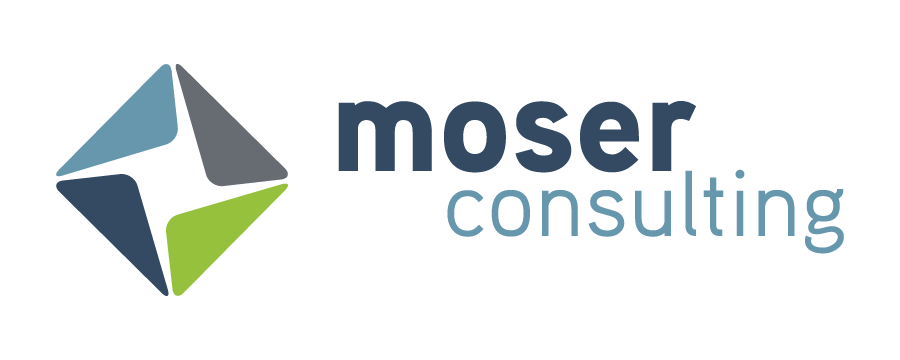Comparing AI Assistants for Productivity – The Emerging Agentic Landscape
As we begin 2025, we are on the precipice of yet another wave of AI-driven innovation. More than just GPTs that answer questions, AI assistants are becoming team members for business users across the world with examples such as Microsoft’s Copilot, Amazon’s Amazon Q, Salesforce’s Agentforce, and Google’s Gemini. In this article, we will discuss the capabilities, limitations, and best fit for each assistant.
Copilot
Copilot stands out as the most enterprise-ready AI assistant, seamlessly integrating across numerous Microsoft products once the subscription is activated. Its browser-based component, which includes a work/personal switch, ensures accessibility to those not always using their usual workstation. Copilot's presence extends beyond productivity applications, namely PowerPoint, Excel, and Word, reaching into the Power Platform with Power BI, Power Apps, and Power Automate, making it a versatile tool for technical users as well.
The greatest benefit of Copilot is the high level of convenience and integration across so many applications in the Microsoft ecosystem. In each setting, Copilot can perform tasks such as summarization, suggesting relevant questions, and fixing errors in grammar and/or syntax. The extensive list of capabilities cannot be covered in this article, but there are a few high-value features that must be highlighted. In the Power Platform, Copilot identifies errors and explains how to add new features for Power Apps, generates descriptions for DAX measures and gives insights from the data in Power BI, and creates flows from a simple description in Power Automate. In Excel, Copilot can quickly create charts and suggest Python code when the formulas available are not complex enough to satisfy the analysis needed. For PowerPoint, it can create a presentation based on a Word document in addition to giving design and speaking skills feedback. Without a doubt, Copilot is multi-talented in its applications.
The main limitation to Copilot as it stands is the same as all AI-powered tools: results are only as good as the data ingested. Though the context window for drafting with Copilot has increased recently, inaccurate or outdated documents being used to base the knowledge on will still beget less than desirable answers. The best way to mitigate this is to organize documents well, archiving files that are no longer relevant and choosing to reference the right ones rather than allowing Copilot to search all available options.
Amazon Q
Amazon Q is the next most enterprise-ready AI assistant. Although it has many of the same functions as Copilot, it differentiates itself by coming in two flavors, Amazon Q Business and Amazon Q Developer. Much like the name suggests, Amazon Q Business is for the average business user for intelligent document search and automating workflows while Amazon Q Developer is more focused on assisting with writing code through natural language descriptions and even building autonomous agents.
The specialization for Amazon Q is its greatest strength. As previously discussed, the Amazon Q Business and Developer offer different experiences with the assistant, but there is further specialization in the channels where Amazon Q is implemented like with Amazon QuickSight, Amazon Connect, and AWS Supply Chain. With a focus on business intelligence, Amazon Q in QuickSight builds dashboards, provides insights about the data, and generates summaries. For customer service, Amazon Q in Connect can interact through conversations using organizational knowledge to answer questions quickly. Another example of Amazon Q’s multi-talented assistance comes with AWS Supply Chain. Using domain-specific knowledge, Amazon Q connects users with analysis on operations and finance.
Integrating Amazon Q into the various business applications is likely the most difficult part for the average organization. Unlike Microsoft and Google, Amazon does not have a predefined set of productivity applications like a word processor, spreadsheet tool, presentation creator, and email system. For this reason, all relevant software will need to be connected to Amazon Q through APIs, if available.
Agentforce
Agentforce is Saleforce’s submission into the AI assistant race. With the native connection to Slack and Tableau, this AI assistant shines in its team collaboration. These agents function as team members, also simplifying agent building through prompts and conversations. From Salesforce, agents can quickly become useful by drawing from the knowledge of Salesforce skills and CRM history. More than any other assistant, Agentforce centers the autonomy of the AI agents and the scale of proactive action.
The vast library of MuleSoft APIs and connectors is a good starting point for the many examples of use cases for Agentforce. How simple it is to work with a multi-system assistant is a key factor in why organizations use this. Sales teams can use Agentforce to automate the process of tracking key deals and managing their pipeline on Salesforce. The AI agents can summarize information from Salesforce objects, update fields, and generate emails or knowledge articles. In Slack, an agent can alert a team autonomously in the channel about changes, and the data on customers can be visualized through conversation with help from Tableau.
The limitation to Agentforce is primarily that it is the least broadly useful across an organization. Due to being spawned from Salesforce as a CRM system, Agentforce is best for sales and marketing teams rather than more technical employees who may be missing the options for coding help that other assistants offer.
Gemini
The last AI assistant to discuss is Gemini. Its stand-out feature is that it is the most developed option for conversational AI and voice recognition. Gemini further makes its own lane by offering AI Studio with a huge library of prompts and models on top of also delivering on the expected assistant features like being integrated into Google Workspace for business users with Big Query and Google Cloud Platform for developers.
Gemini can do many things in its wide array of app integrations. In just the Gemini Business subscription, Gemini in Gmail can draft and respond to emails using natural language processing. In Google Docs, it can assist with writing and editing documents by suggesting improvements and generating content, and Gemini can help analyze data and create visualizations in Google Sheets. The Gemini Enterprise subscription of Gemini also emphasizes translations and AI notetaking, making it a valuable tool for global businesses that require multilingual support and efficient documentation. For the data professionals in organizations, Gemini in Big Query is a code helper and writes queries through natural language requests, and some functions in Google Cloud Platform include optimizing database design and ensuring security protocols are implemented, among other things.
A primary drawback of Gemini as an assistant is that despite its sophistication in speech and generating verbal responses in a myriad of voices, it is still only as good as its data and parameters. Like with any AI tool, it can still hallucinate and misunderstand inputs.
Conclusion
Overall, the AI assistant landscape is similar in its most frequently used functions, but it is still ever growing as each organization creates their own assistants customized to specific roles. On a high level, AI is continually making improvements toward moving into the voice-enabled space, understanding natural language requests, and working autonomously. Each of these AI assistants offer unique strengths whether it be Copilot, Amazon Q, Agentforce, or Gemini, and the right one will ultimately depend on the needs and priorities of the organization.
Further Reading:
Copilot – Personal AI Assistant
Copilot – AI Tools for Organizations
Amazon Q – Generative AI Assistant
Agentforce 2.0 and MuleSoft: What’s to Come Early 2025



